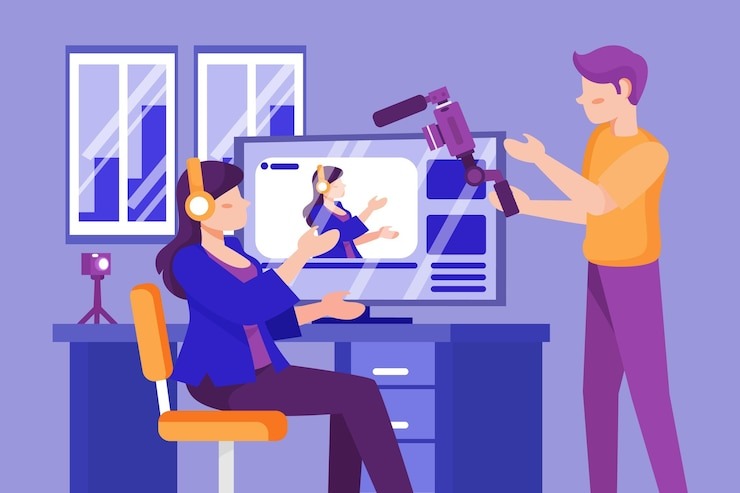
As visual storytelling continues to dominate digital marketing in 2025, animation has become a go-to medium for SaaS companies, startups, and growing brands alike. But one critical question continues to spark debate in creative and marketing circles:
Should your brand invest in 2D or 3D animation?
Both animation styles offer compelling benefits—but the right choice depends on your brand identity, budget, message complexity, and audience expectations. In this blog post, we’ll explore the pros and cons of 2D and 3D animation, compare them across key marketing use cases, and help you make the best decision for your brand’s goals.
What’s the Difference Between 2D and 3D Animation?
Before diving into strategy, let’s define the core differences:
- 2D Animation is flat, two-dimensional and typically involves characters, icons, and objects drawn in height and width only. Think explainer videos, whiteboard animations, and kinetic typography.
- 3D Animation adds depth, offering a more realistic, immersive experience. Characters and elements move in a three-dimensional space—ideal for product simulations, virtual environments, or architectural fly-throughs.
Common Tools:
- 2D: Adobe After Effects, Toon Boom, Vyond
- 3D: Blender, Cinema 4D, Autodesk Maya, Unity
Why the Right Animation Style Matters in 2025
In an era dominated by video-centric search, algorithmic personalization, and increasingly short attention spans, the format you choose can directly impact engagement, trust, and conversions.
Some high-intent queries driving animation choices include:
- “Best animation style for SaaS product launch”
- “3D vs 2D video for tech startup branding”
- “Should I use 3D animation for explainer videos?”
Your animation choice can influence dwell time, brand perception, and even your ability to rank for featured snippets or video carousels on Google.
2D Animation: Pros, Cons, and Best Use Cases
Pros of 2D Animation
- Cost-effective: 2D is generally quicker and cheaper to produce.
- Flexible for branding: Easy to align with your visual identity (fonts, color palettes, icons).
- Simplifies complex ideas: Perfect for explainers and onboarding.
- Mobile-friendly: Lightweight and ideal for web and email marketing.
Cons of 2D Animation
- Limited realism (which may reduce appeal for certain audiences)
- May feel less innovative in highly technical industries
Best Use Cases for 2D Animation:
- SaaS product explainers
- Startup fundraising videos
- Email campaigns and social media ads
- Internal communication and training
- Whiteboard videos and infographics
Related search queries to target:
- “Affordable 2D animation for startups”
- “How 2D animation explains SaaS features”
- “Best 2D explainer video platforms”
3D Animation: Pros, Cons, and Best Use Cases
Pros of 3D Animation
- Visually immersive: Adds realism, depth, and polish to your content.
- Ideal for technical storytelling: Great for showcasing product mechanics, simulations, or architectural layouts.
- High brand perception: Often associated with innovation and premium branding.
Cons of 3D Animation
- Higher production cost and time
- Requires more technical resources
- Not ideal for every industry or audience
Best Use Cases for 3D Animation:
- Enterprise software overviews
- Product renderings and demos
- Augmented reality and metaverse integrations
- Healthcare and biotech marketing
- Virtual tours and environment walkthroughs
Related SEO keywords to target:
- “3D product animation for SaaS”
- “3D explainer video for enterprise tech”
- “Visualize software workflow in 3D”
How to Choose the Right Animation Style for Your Brand
1. Know Your Audience
Are your users visual learners, technical stakeholders, or mobile-first consumers?
- If you’re targeting early-stage adopters or SMBs, 2D may be ideal.
- If you’re pitching to CIOs or enterprise buyers, 3D adds a premium feel.
2. Consider Your Product Complexity
A no-code tool? Use fun, simple 2D.
A machine-learning cloud engine? 3D may better convey the infrastructure.
3. Align with Your Brand Identity
- Minimalist? 2D will match your aesthetic.
- Futuristic or technical? 3D will elevate your positioning.
4. Think About Speed and Budget
- 2D animations can often be turned around in 1–2 weeks.
- 3D animations typically take 4–6 weeks due to rendering and modeling.
5. Don’t Be Afraid to Combine Styles
Many SaaS brands now use hybrid animation—mixing 2D interfaces with 3D environments for a balanced visual narrative.
FAQs
Q1: Which animation style works better for B2B SaaS brands?
A: Most B2B SaaS brands begin with 2D animation due to its speed and accessibility. However, 3D is becoming more popular for enterprise-level pitches and technical solutions.
Q2: Can I rank better with 3D animation?
A: Google doesn’t prioritize 3D over 2D—but video SEO factors like schema markup, engagement time, and contextual relevance influence visibility more than format.
Q3: Is 3D animation worth the investment?
A: If your brand operates in high-tech, biotech, or infrastructure-heavy industries, 3D animations pay off in perception, engagement, and demo performance.
